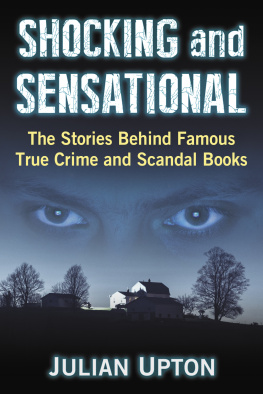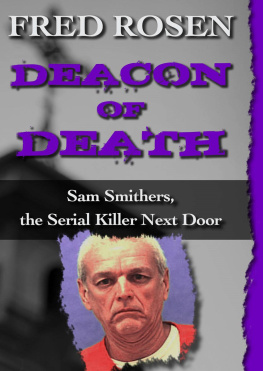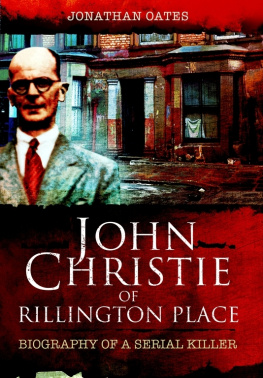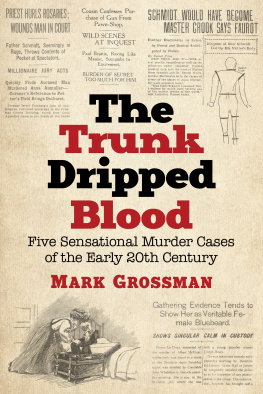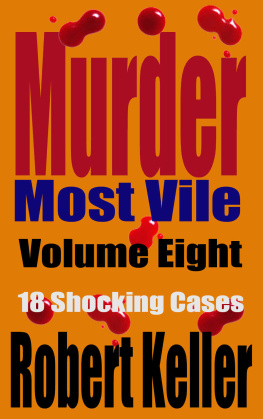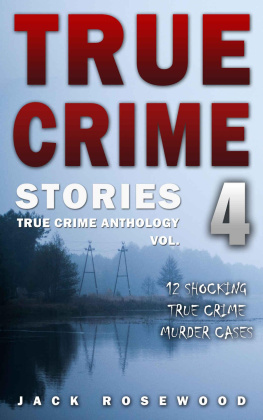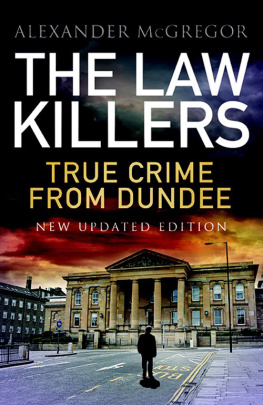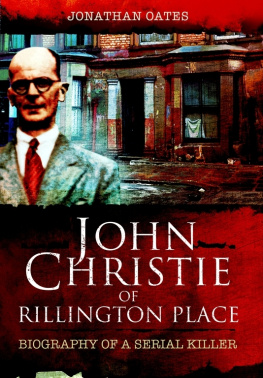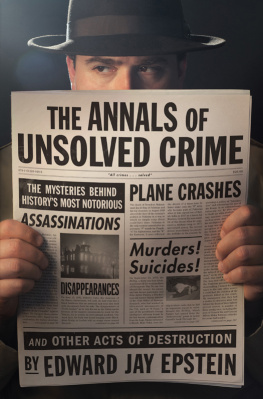
SHOCKING AND SENSATIONAL
The Stories Behind Famous True Crime and Scandal Books
Julian Upton

Jefferson, North Carolina
LIBRARY OF CONGRESS CATALOGUING DATA ARE AVAILABLE
BRITISH LIBRARY CATALOGUING DATA ARE AVAILABLE
e-ISBN: 978-1-4766-3370-1
2018 Julian Upton. All rights reserved
No part of this book may be reproduced or transmitted in any form or by any means, electronic or mechanical, including photocopying or recording, or by any information storage and retrieval system, without permission in writing from the publisher.
Front cover photograph by Shaun Lowe (iStock)
Exposit is an imprint of McFarland & Company, Inc., Publishers

Box 611, Jefferson, North Carolina 28640
www.expositbooks.com
Acknowledgments
I offer my thanks to Jennifer Upton for her support and invaluable help with the editing of this book, and to Gary Ramsay and David Kerekes for their suggestions and encouragement.
Introduction
This book grew from an initial consideration of movies based on real-life crimes, specifically films that achieved a prominent level of fame or notoriety. A few high-profile titles, both faithful and fictionalized, came quickly to mind, including Alfred Hitchcocks Psycho (1960), Richard Fleischers The Boston Strangler (1968), and the documentaries The Thin Blue Line (Errol Morris, 1988) and Bowling for Columbine (Michael Moore, 2002). But the focus soon shifted to books. While films and television series have long relied on true crime as a rich source of material, until recently they rarely achieved the impact that the key books of the genre have had. For around a forty-year period beginning with Truman Capotes In Cold Blood in 1965, true-crime books, both literary and populist, reigned supreme. They could provoke audiences, mobilize campaigners, highlight injustices, present new evidence, and, most controversially, delve into the sordid details behind criminal cases with an unflinching eye that was beyond the scope of most filmmakers.
Of course, many of the most celebrated true-crime films owe their geneses to books. Hitchcock drew from Robert Blochs novel Psycho, based on the real-life activities of the body snatcher and killer Ed Gein. Fleischers The Boston Strangler was a faithful adaptation of Gerold Franks 1966 account of the investigation into the murders confessed to by Albert DeSalvo. Fleischers later 10 Rillington Place (1971) followed Ludovic Kennedys 1961 book on the crimes of John Reginald Christie. Even a film as ambitious and expansive as Oliver Stones JFK (1991) leaned heavily (and perhaps regrettably) on just two books, Jim Garrisons On the Trail of the Assassins (1988) and Jim Marrs Crossfire: The Plot That Killed Kennedy (1989). But plenty of books have addressed narratives that were, arguably, too potent, too divisive, or just too complex for films and television series to explore successfully. Marilyn Monroes death, for example, has yet to yield a major film version that matches the impact of the most provocative literary accounts of the subject. No film has yet tackled the sensitive case of the British child killer Mary Bell, who was profiled so powerfully by the writer Gitta Sereny. And at the time of this writing, the mooted screen version of Under the Banner of Heaven, Jon Krakauers controversial 2003 investigation into a Mormon fundamentalist murder, remains unmade after six years in development. On the other hand, many films have tried and failed to recreate or interpret scandalous true-life events that have been effectively probed by writers and journalists. Mommie Dearest (1981), Star 80 (1983), The Black Dahlia (2006), and The Mystery of Natalie Wood (TV 2004) are just some of those whose compromises, cannibalizations, or artistic failings result in an experience that falls far short of some of the writing on the subject.
Focusing, then, on that hard copy era when crime and scandal literature could disrupt the discourse and fuel controversies that matched, and sometimes exceeded, the notoriety of the very cases it detailed, this book considers a number of notable (and some less notable) efforts, the crimes or perceived crimes that inspired them, the sometimes turbulent journey from concept to publication, and, crucially, the effect such books had both on the cases they discussed and on the wider culture. It is a selective review, favoring some personal choices above expected inclusions. As such, some titles will be conspicuous by their absence: the aforementioned In Cold Blood and The Boston Strangler and other staples of the genre, such as Joseph Wambaughs The OnionField (1973), Vincent Bugliosi and Curt Gentrys Helter Skelter (1974), Norman Mailers The Executioners Song (1979), and Ann Rules The Stranger Beside Me (1980), are not examined here. But these classics have been covered, to varying degrees, by many other writers and scholars (in the case of In Cold Blood, the development of Capotes book was also recounted in two films, Capote and Infamous, released within a year of each other in 200506). And not all the books featured in these pages are good ones. A bad, or at least a flawed, true-crime book can be as controversial and consequential as a classic, if for different reasons. Also, some of the titles covered do not stand out as individual contributions as much as they serve to perpetuate the ongoing debate around a case. Their subjects range from notorious murders to the memoirs of a hangman (Executioner: Pierrepoint), a celebrated case of white collar crime (Indecent Exposure), and a mystery where no crime may have been committed at all (Goodbye Natalie, Goodbye Splendour). Limiting the discussion to accounts of particularly vile murders would be a disservice to the span of the true-crime genre. Finally, in keeping with my previous writing, there is a strong thread of Hollywood-themed narratives here, but it is fair to say that the movie industry has long been a focal point of crime and scandalits promise of sex, fame, money, and power attracting plenty of unsavory types while corrupting others ensconced in its system. And after the revelations of 2017, Hollywood looks set to feed the true-crime genre for some years to come.
While the advent of electronic self-publishing has seen the true-crime book become more ubiquitous than ever, its power has diminished. In the online streaming age, its status is falling behind that of the television and podcast documentary series, particularly those multi-episode examples of recent years, such as HBOs The Jinx (2015), Netflixs Making a Murderer (2015) and The Keepers (2017), and WBEZs Serial (201416). These documentaries are the popular, user-friendly, 21st-century equivalents of the weighty true-crime bestsellers of old, offering lengthy immersions in the details of a case, a wide cast of characters, revelations of new evidence, a succession of cliff-hangers, and, often, breath-taking denouements. As the appetite for this format continues to grow, and the race to populate the genre with sensational new investigations intensifies, the new breed of documentary makers may well head back to those cases which, for a long time, could only be meaningfully explored by books.
Next page
